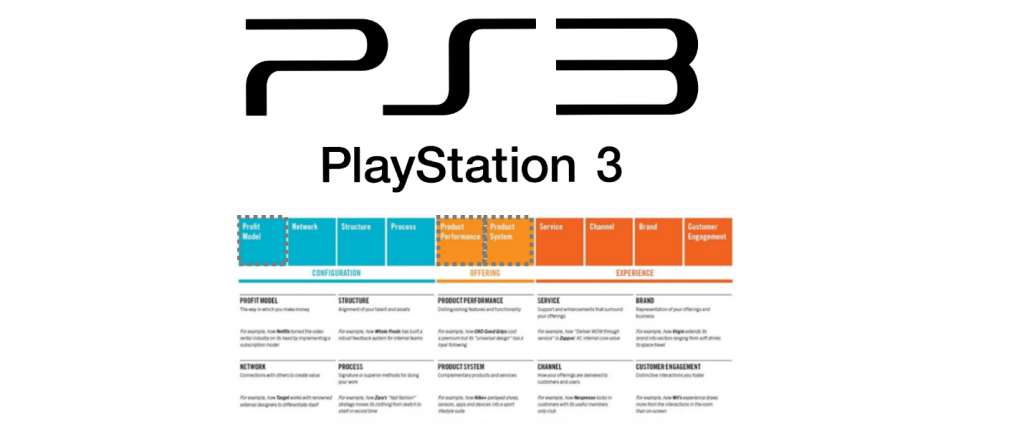How to Leverage the 10 Types of Innovation to Build a Powerful New Product
One of the most useful books I have read this year has been “Ten Types of Innovation,” by Larry Keeley. It points out that while the process of launching new products can be considered an innovative activity, your product and its performance metrics are merely one aspect of innovation. It’s necessary to not only inspect the entire product lifecycle, but to shift your focus to some of the more unassuming silos of your business (customer engagement, or brand for example) while measuring your success.
Let’s take look at this list of innovation types for more examples on where your organization might innovate:
| Category | Name | Description |
| Configuration | Profit Model | Make Money |
| Configuration | Network | Connect with others to create value |
| Configuration | Structure | Align your talent and assets |
| Configuration | Process | Use signature or superior methods to do your work |
| Offering | Product Performance | Employ distinguishing features and functionality |
| Offering | Product System | Create complementary products and services |
| Experience | Service | Support and enhance the value of your offerings |
| Experience | Channel | Deliver your offerings to customers and users |
| Experience | Brand | Represent your offerings and business |
| Experience | Customer Engagement | Foster distinctive interactions |
As you can see above, all 10 types of innovation relate to your product but are not direct attributes of it. Areas such as your “Network” or “Customer Engagement” can be enhanced to improve your product’s effectiveness, though the results of your efforts may not be entirely realized the moment a change is made to those areas. Implementing innovation tactics in any industry can be a difficult balancing act. Bring too many new products and features to the market and you may soon find that your customers are confused and unsure of how to respond. Conversely, not supplying enough change to a stagnant market may very well put your company out of business.
In this article, we will delve into how the ten innovation types relate to the product development lifecycle, and why you may want to follow in the example of companies who have successfully employed this framework.
One is Not Enough
The most important lesson one can glean from this book is that the commitment to only one type of innovation is never enough.
A perfect example of this is misstep can be seen in the practices of pharmaceutical companies between the years of 2000 and 2010. We understand that within this period, corporations stuck to “Product Performance” innovation by pouring their large budgets into manufacturing new and exciting drugs. In the early part of the 21st century, it was standard practice to send individual representatives to doctors to pitch drugs, and new products. At some point in early 2010, it became clear that it was not going to be sustainable to produce a new drug every other month, and that the market was quickly shifting towards purchasing the more affordable generic drugs. Sensing industry upheaval, these pharmaceutical companies pivoted and shifted to innovate in by “Process” and “Channel.” They found ways to manufacture the same drugs at a lower upfront cost and build digital interfaces between physicians and patients.
A series of partnerships between pharma companies were formed (an example of the “Network” innovation type), which led to the creation of online resources for physicians and patients. It was only at this point that these companies began seeing gains in revenues once more.
Clearly, pharmaceutical companies realized the potentially crippling effect of relying on only one type of innovation to drive product sales. Through their actions, they demonstrated that the market favours a company which leverages multiple innovation types.
Success Stories
Gillette and their sale of razors serve as a great example of successfully employing multiple innovation types. Originally established as a premium product, the company soon learned that they could make more money by selling the handles at cost, and marking up the replacement razor packs (“Profit Model”). In this paradigm, users would be driven to buy the handle with a sample of blades at a lower cost, then buy the high cost replacement razors later when they ran out. This strategy turned out to be a huge success and many other companies adopted similar models after seeing it in action.
Can you think of a way to leverage these tactics in your own business?
Another similar story comes from Sony Entertainment of America, who utilized not only the “Profit Model” and “Product Performance”, but also the “Product System” with their PlayStation 3. Consoles were sold at a large cost to Sony, given the high price of Blu-Ray disc technology at the time. However, their product filled a niche as one of the least expensive standalone Blu-Ray players on the market at the time. This worked in Sony’s favour, as households (many of whom didn’t even play video games) began adopting the PS3 as their standalone Blu-Ray player. Sony eventually recouped costs with sales of their marked-up video games.

Set a Goal
Before attempting to innovate, it is very important to establish a clear goal, identifying which areas you would like to innovate in, and tying this to an “ambition level”. Different levels of ambition are available to any company when progressing with a new product launch. You must distinguish between “changing the known”, “changing the boundaries”, or “changing the game.”
An excellent example of a clear innovation goal can be summarized by John F. Kennedy’s quote referencing taking a man to the moon:
“First, I believe that this nation should commit itself to achieving the goal, before this decade is out, of landing a man on the moon and returning him safely to the earth.”
This is a clearly measured statement, with a challenge to America to complete a seemingly impossible feat in space travel. Even more importantly, this statement includes a time limit so that there is some pressure to reach the goal. If your organization can leverage something similar when creating a new product, you will be in a good position to outpace industry norms and become an innovative player in the market.
Preparing to Innovate
Start by assessing your current business model, a specific platform you’ve seen becoming stale, and some ways to interact with the 10 types of innovation. If you’d like to start analyzing your business for the best ways to innovate, consider the following:
- Follow the levels of ambition chart, and think about the minimum number of types of innovation you’ll need at launch to make an impact.
- Consider: How can we innovate differently? How ambitious do we need to be? Follow the “levels of ambition” detailed in the Glossary.
- Create a clear statement of innovation.
- Find potential areas of opportunity in your business, but focus on one platform instead of the entirety of your business.
- You haven’t finished the process of innovating until you bring the offering to market and are generating revenue from it.
That wraps up the principles of the 10 types of innovation. We hope you were able to follow along easily as we broke it down and are inspired to explore how they apply to your business.
If you’d like to share your thoughts or some of your own strategies, please comment down below.
Looking to innovate your technology team’s organization skills? Take a look at “3 Powerful Structures to Organize Your Technology Team.”
—

Thomas Rautenbach, Architect
Thomas Rautenbach has over 20 years of diverse systems experience with a strong focus on system and integration architecture and software design and development. He has detailed technical, functional and system knowledge across the SAP technology platform, including extensive experience with the Finance, Supply Chain, Sales and Distribution, and Human Resources modules.
Follow Pangaea Solutions on LinkedIn
Appendix
Levels of Ambition
| Innovation Ambition Level | Description | Example |
| Change the known | Changing one or two types of innovation in your business model. Works better in industry leaders than in businesses trying to break into the market. | Lego “Mindstorms” line of robotic toys captured the minds of university programs across the USA and became key tools in introductory learning for cognitive systems. |
| Change the boundaries | Changing 3 to 4 types of innovation in your business model. Generally, this requires new customers to be brought into the segment and can provide lasting revenue if it’s unable to be copied quickly. | Method’s household cleaning products satisfied their customer’s needs for environmental friendliness as well as aesthetics. |
| Change the game (transformational innovation) | Changing 5 or more types of innovation in your business model. | Tesla’s entire business: the way they deliver their cars from factory to consumer (“Channel”), their showrooms that offer only information and engaging atmosphere (“Customer Engagement”), and smart integration with suppliers (“Network”), all demonstrate transformational innovation. Combine this with a (“Product System”) that encourages free car charging at their supercharger network with a (“Brand”) that epitomizes luxury and eco-friendliness, and you have an effective transformational innovation example. |
Innovation Tactics
| Category | Name | Description |
| Profit Model | Ad-Supported | Provide content or services for free to one group, while selling viewership or email lists, to another group. |
| Profit Model | Auction | Allow a market and its user to set the price for goods and services. |
| Profit Model | Bundled Pricing | Bring two or more products/services together into one combined package. |
| Profit Model | Financing | Sell the customer on making smaller payments with the addition of revenue generating factors (i.e. interest) on a stretched time scale. |
| Network | Alliances | Share risks and revenues with another company, thereby improving competitive advantage for both parties. |
| Network | Franchising | Bring new partners into the business by giving them control of satellite offices and teaching them the correct way to run the business. |
| Network | Supply Chain Integration | Coordinate with different suppliers to bring in goods and services at the right timing and value for your organization. |
| Structure | Corporate University | Create a space for learning to progress members of your organization. |
| Structure | Decentralized Management | Bring decision making to the ground floor of your organization. |
| Structure | Outsourcing | Let vendors perform some of your operations. |
| Process | Crowdsourcing | Outsource work to a large group of individuals. |
| Process | Intellectual Property | Find a way of patenting your ideas so that they can’t be copied by other companies. |
| Process | Process Automation | Bring in tools and infrastructure that can replace basic employee tasks and free up your team for more complex work. |
| Product Performance | Added Functionality | Add new features to an existing product or service. |
| Product Performance | Customization | Enable the customer to change the features they select before purchase. |
| Product Performance | Feature Aggregation | Combine many existing features from separate sources into a single offering. |
| Product System | Extensions/Plug-ins | Allow third party resources to contribute features that add functionality. |
| Product System | Modular Systems | Provide a product/service system with individual parts that can gain value when combined. |
| Service | Guarantee | Remove a customer’s risk, by allowing them to return the product or get their money back. |
| Service | Self-Service | Allow users some control over activities that would normally require an employee or team member. |
| Service | Personalized Service | Target a customer’s happiness directly through customized service. |
| Channel | Context Specific | Offers for items/services that are location, occasion, or situation specific. |
| Channel | Go Direct | Directly connect with customers and skip the normal retail channels. |
| Channel | Multi-Level Marketing | Sell bulk goods to an independent third party, that will sell these items for you. |
| Brand | Certification | Establish a brand or mark that shows your dedication to conforming to third party standards of value. |
| Brand | Component Branding | Separately brand a piece of your offering, and make a package seem more appealing. |
| Brand | Values Alignment | Always broadcast some big idea or set of values through your company. |
| Customer Engagement | Experience Automation | Automate customer tasks and allow them to enjoy more of the fun aspects of your product. |
| Customer Engagement | Mastery | Add value to your customers lives by providing dedicated resources that enable them to learn new skills. |
| Customer Engagement | Whimsy and Personality | Humanize your offerings with comical or otherwise exciting messages that bring life to your company. |
*Note that these are only a sampling of the innovation tactics you can use. Check out the book for more examples!*




